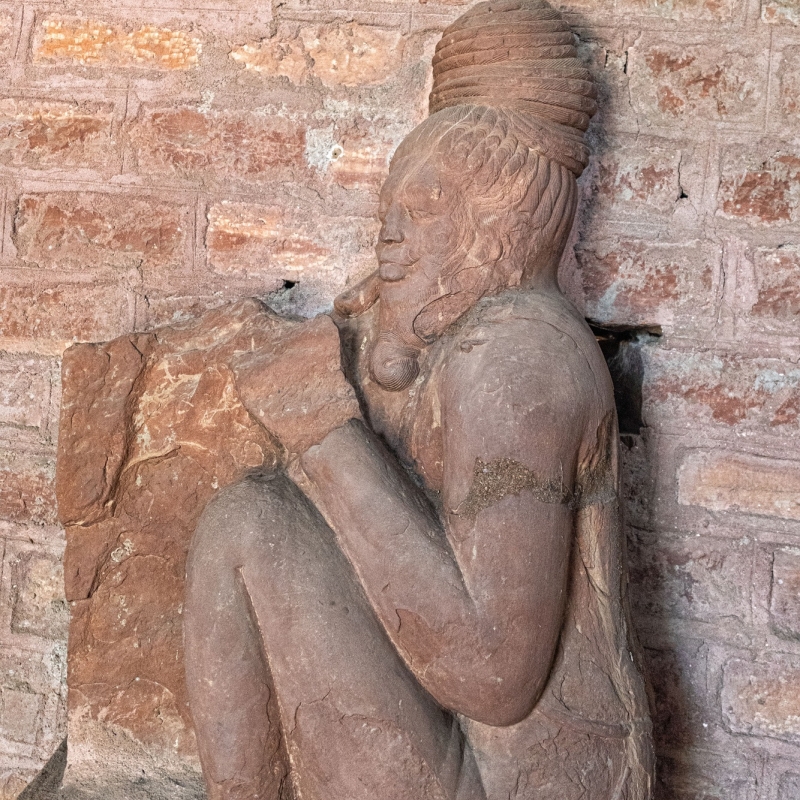The site of Tālā is located in the Ameri-Kanipa village in the Bilaspur district of Chhattisgarh. The site has two ruined temples- Devarani and Jethani, several dislodged sculptures, architectural elements and a site museum. Of whatever is left; the Devarani better preserved than the Jethani, were built of red sandstone and bricks. The remnants of the temples suggest great height, which was achieved without the use of mortar, a possible reason for their early disintegration. The site yields rich sculptural remains. Of all the sculptures from the site, the one popular as the "Tālā sculpture" became the attraction of the site, so much so that Tālā became equivalent to the sculpture and not so much the site.
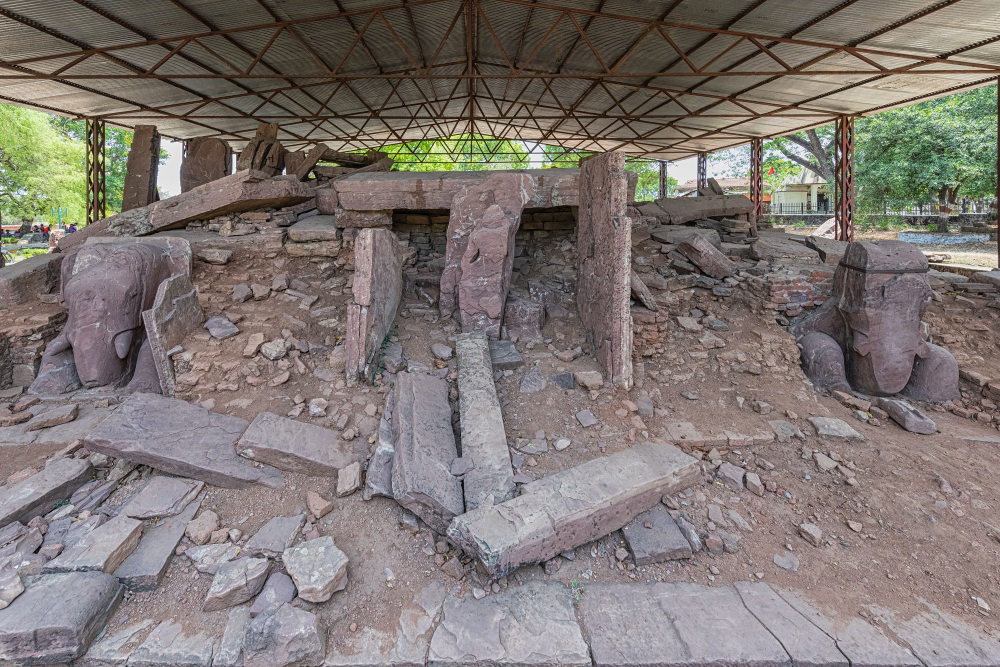
Tālā. Ruins of the Jethani temple. Photo Credit: Anzaar Nabi
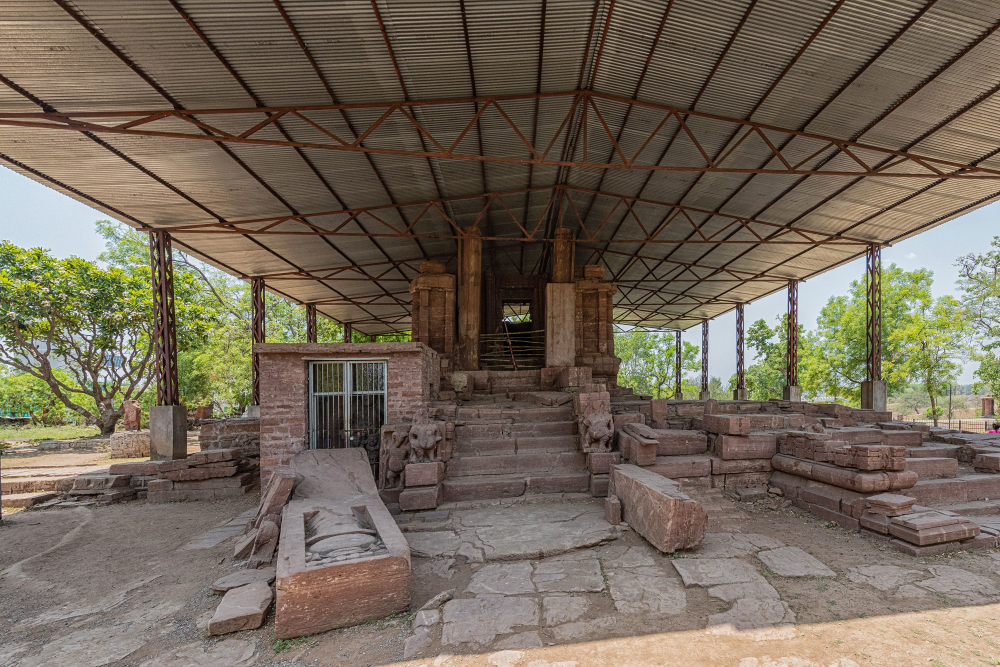
Tālā. Devarani temple. Photo Credit: Anzaar Nabi
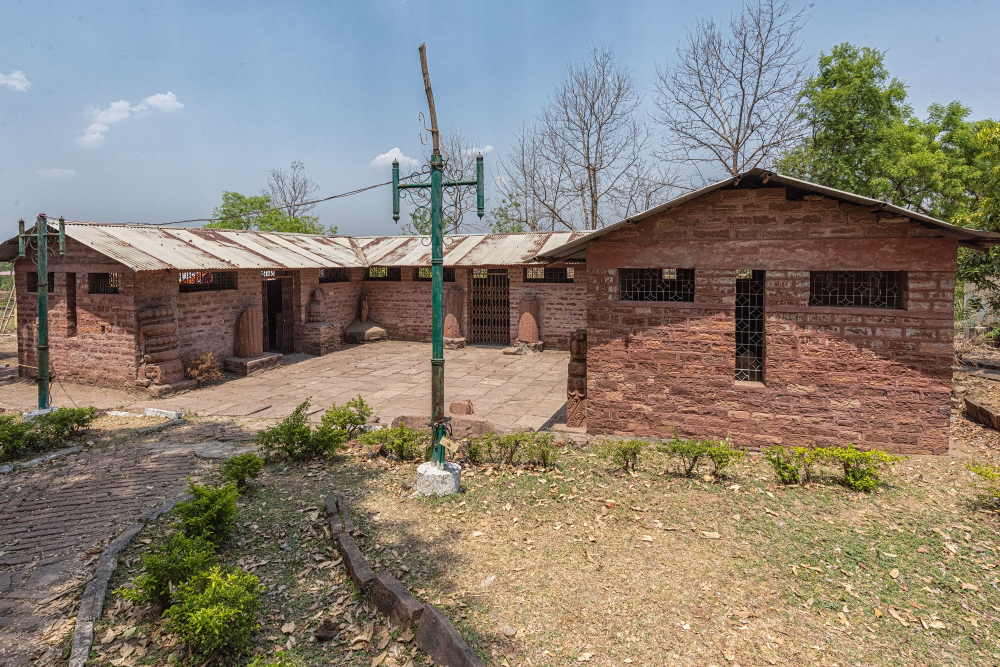
Tālā. Site museum. Photo Credit: Anzaar Nabi
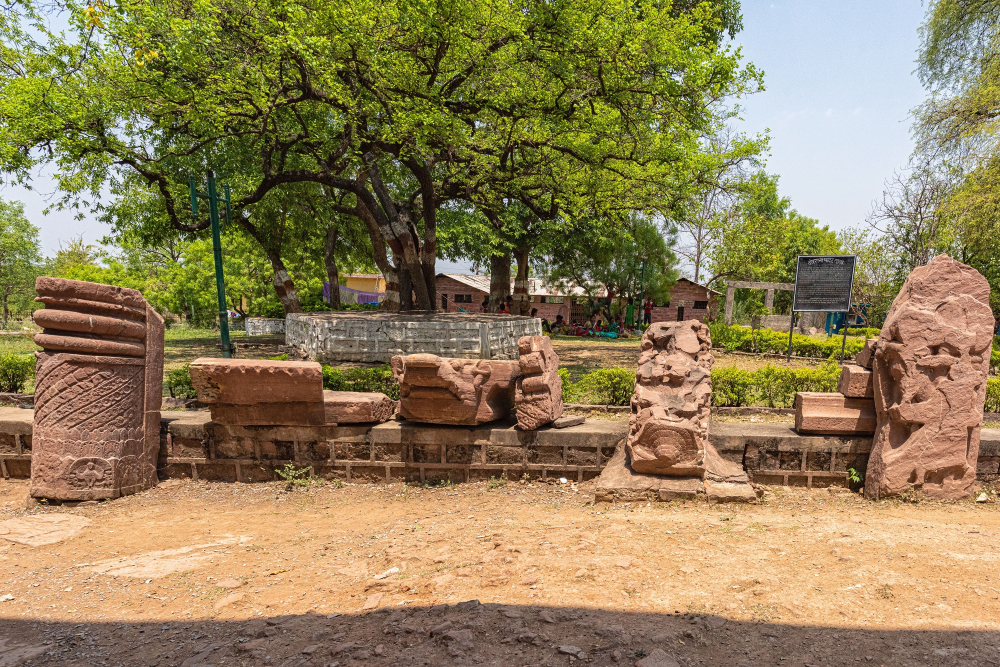
Dislodged sculptures on the site. Photo Credit: Anzaar Nabi
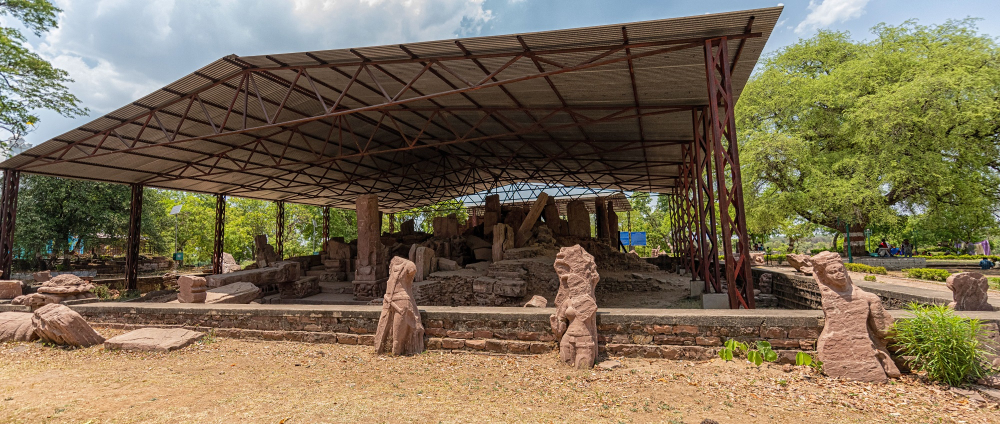
Dislodged sculpture skirting the Jethani temple. Photo Credit: Anzaar Nabi
Tālā was first mentioned in the writings of J D Beglar's 1878 ASI report (Vol. VII). However, Beglar did not visit the site. V S Thakur is accredited for popularising the site of Tālā. This was followed by the first visit of Donald Stadtner, Harihar Swali and L S Nigam (1973) after which the first literature on the site was published by Donald Stadtner in 1980. Several conservation works were carried out in the following years- 1984 under A K Risbud and, 1985-86, 1986-87, 1987-88 under G L Raikwar and Rahul Singh. It was possibly through these years that the dislodged sculptures were removed from the mound and placed skirting them. The temples were also covered with asbestos sheets and, a site museum was setup. However, it is unusual how most of the sculptures from the Tālā are scattered around the site and, not a part of the museum.
The site of Tālā has been variously identified by scholars. K D Bajpai has associated the site with Sangamagrama (part of the Pandava territory) on the basis of the Malhar copper plate inscription of Surabali. A M Shastri associated Tālā with a place called Tālī mentioned in the Sambalpur University copper plates of Mahābhāvagupta I. According to S K Pandey Talāharī Maṇḍala in the Kalachuri records was perhaps Tālā. L S Nigam disagrees with the idea of associating Tālā with a particular region.
The dearth of epigraphic and textual evidence from Tālā has led to serious difficulties in ascertaining the patrons and time-period of the site. In fact, the movement of sculptures from their original position to the insides of the temples (in the case of the Devarani temple), around them and in the museum has made their iconographic programme disorderly, leading to unclear dedication. Moreover, the close proximity of the two temples problematises the very affiliation of the sculptures to the Devarani or, the Jethani temples. L S Nigam however, dates the temples to the time-period of the Śarabhapuriyas (510-535 CE) on the basis of a silver coin of Prasannamatra (now in the Bilaspur museum) found during the excavation/clearance of the Jethani temple. Of the two Nigam opines the Jethani temple to be earlier. To him the logic rests in the fact that the architectural methods applied in the construction of the Jethani temple was naive or experimental- while its foundation was made out of brick, the rest of the temple was fashioned out of huge blocks of stone, which burdened the substructure of the temple leading to its collapse. On the other hand, the Devarani temple built at least a few decades after the Jethani temple revealed remarkable planning and engineering. Excavation disclosed the use of buttresses in the foundation of the temple which strengthened the structure holistically.
The Devarani and Jethani Temples
Devarani and Jethani temples are the earliest temple from the region of Chhattisgarh, dated somewhere in the early 6th century CE. The temples most possibly acquired these names after their mention in Beglar’s report as Jittāni temple. The temples also began to be locally addressed as Devarani and Jethani due to the two sculptures of river goddesses [?] concealed between the facade and the door frame of the Devarani temple.
Jethani Temple
The remains of the temple exhibit great proportion. Owing to its dilapidated state it is difficult to imagine the plan and elevation of the Jethani temple. The ruins it is certain that the temples were constructed of ashlar and bricks. The huge pile of Jethani temple includes several defaced sculptures, pillars and, an āmlaka which could be a crowning member of its śikhara. The several sculptures lying around the Jethani temple are big in form and depict similar countenance- round face, bulging eye, distinct hair-styles, which seem in tandem with the contested sculpture. It is most likely that the śikhara of the Jethani temple was made in stone and echoed the style of the Deogarh Dasavatara temple and Bhitargaon brick temple as pointed out by L S Nigam and Krishna Deva. The likeness of its śikhara with the Bhitargaon temple seems unlikely.
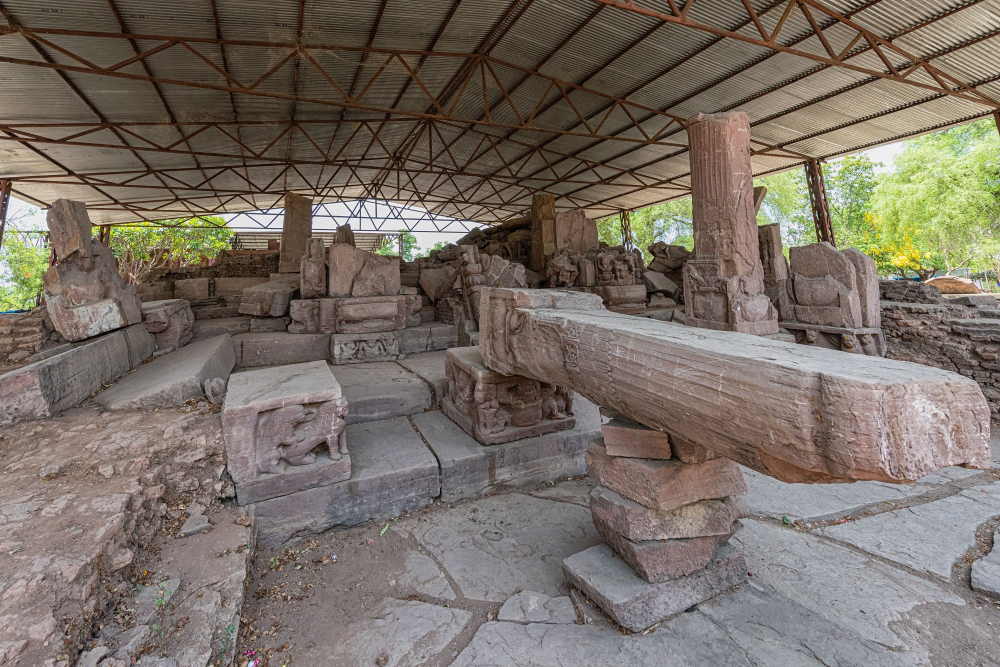
Tālā. Closer view of the ruins of the Jethani temple. Photo Credit: Anzaar Nabi
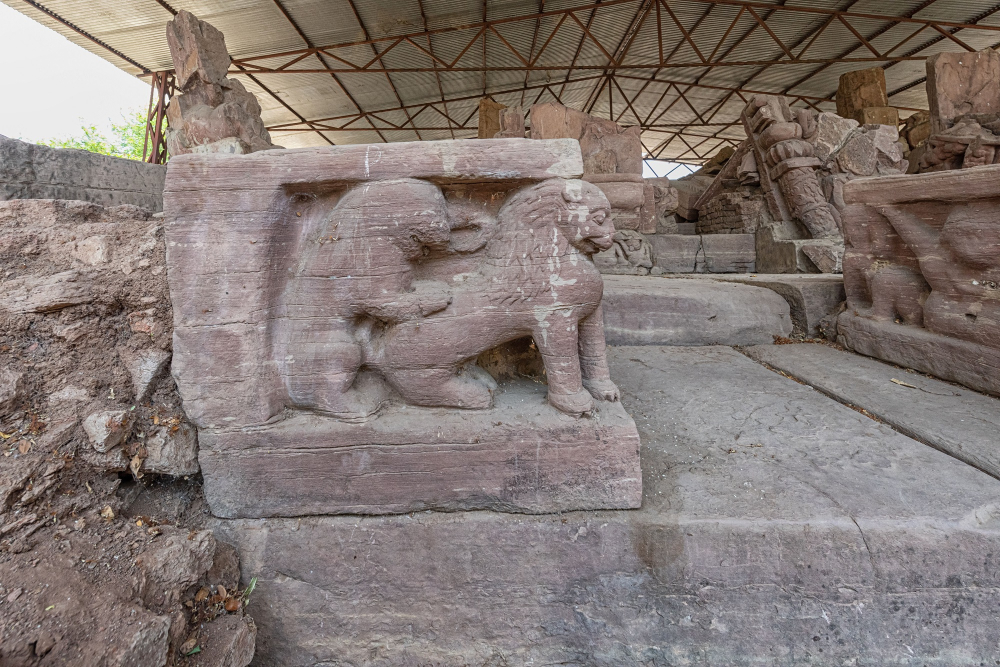
Tālā. Jethani temple, amorous lions. Photo Credit: Anzaar Nabi
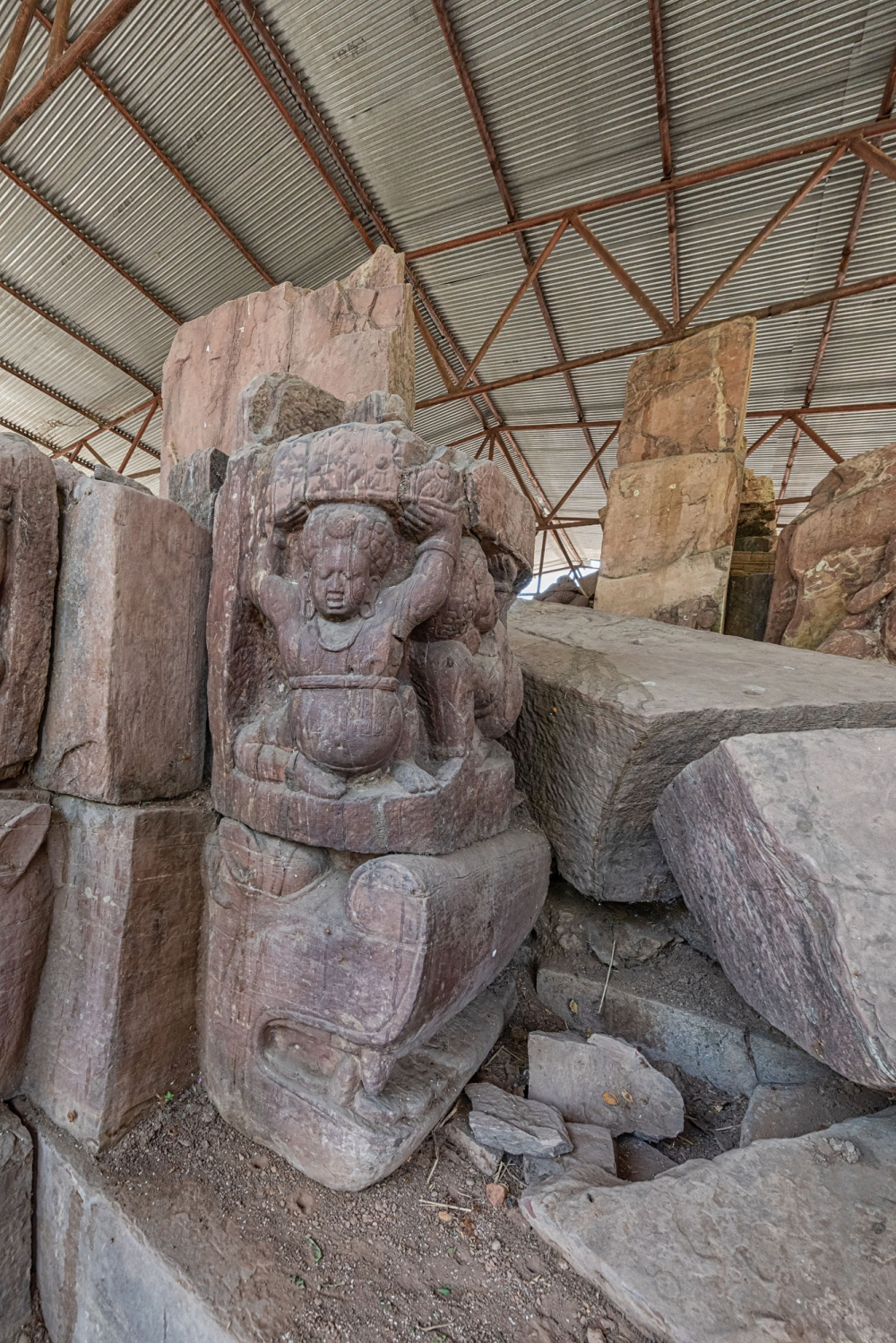
Tālā. Jethani temple, load bearer (bhāravāhaka). Photo Credit: Anzaar Nabi
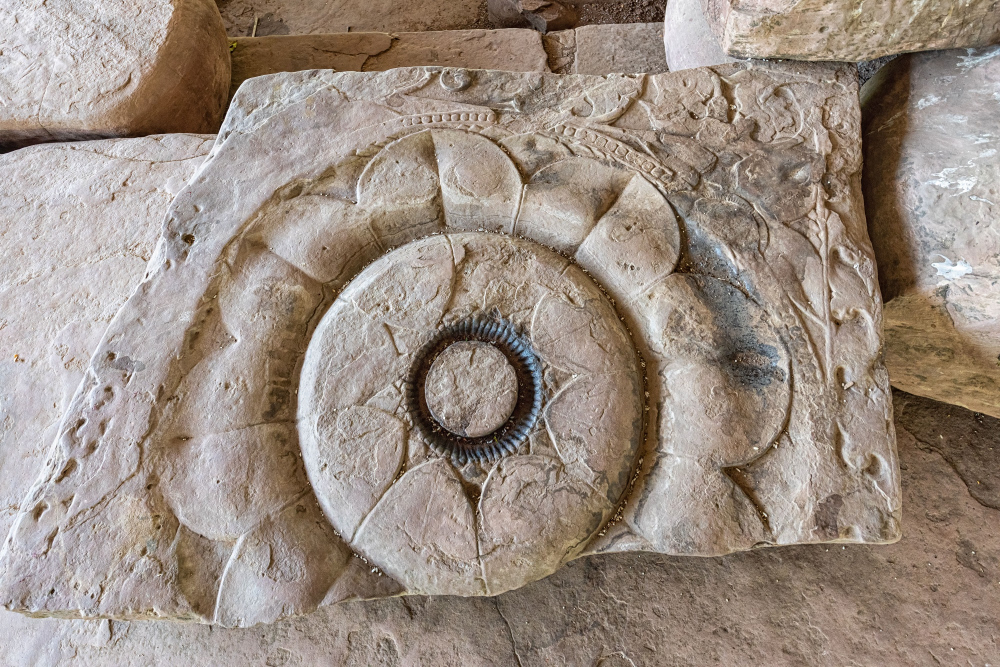
Tālā. Jethani temple, slab with lotus (padma) carving. Photo Credit: Anzaar Nabi
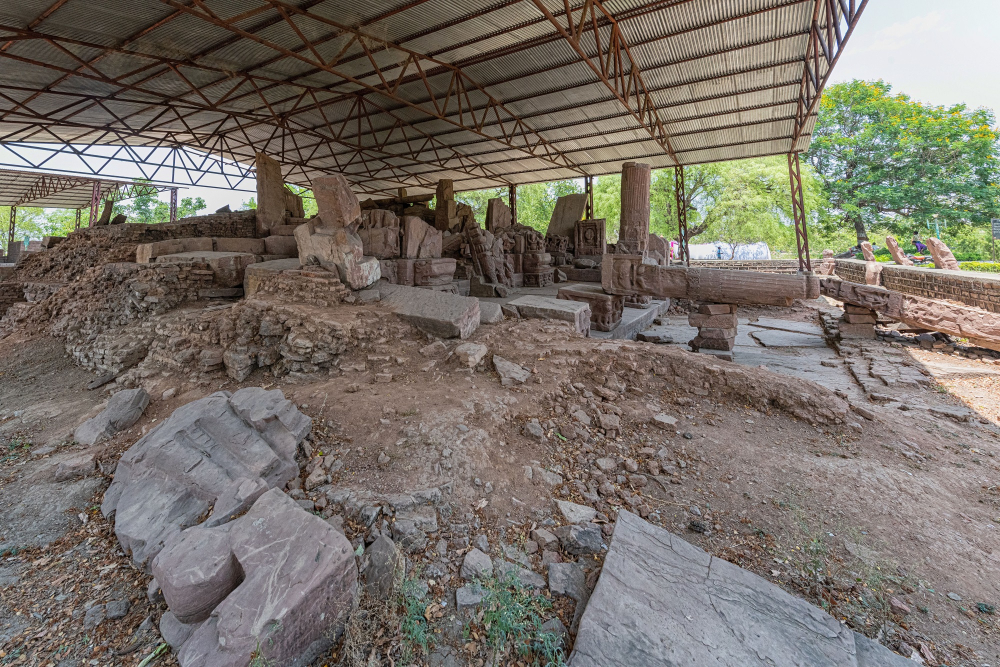
Jethani temple, ruins of brick substructure. Photo Credit: Anzaar Nabi
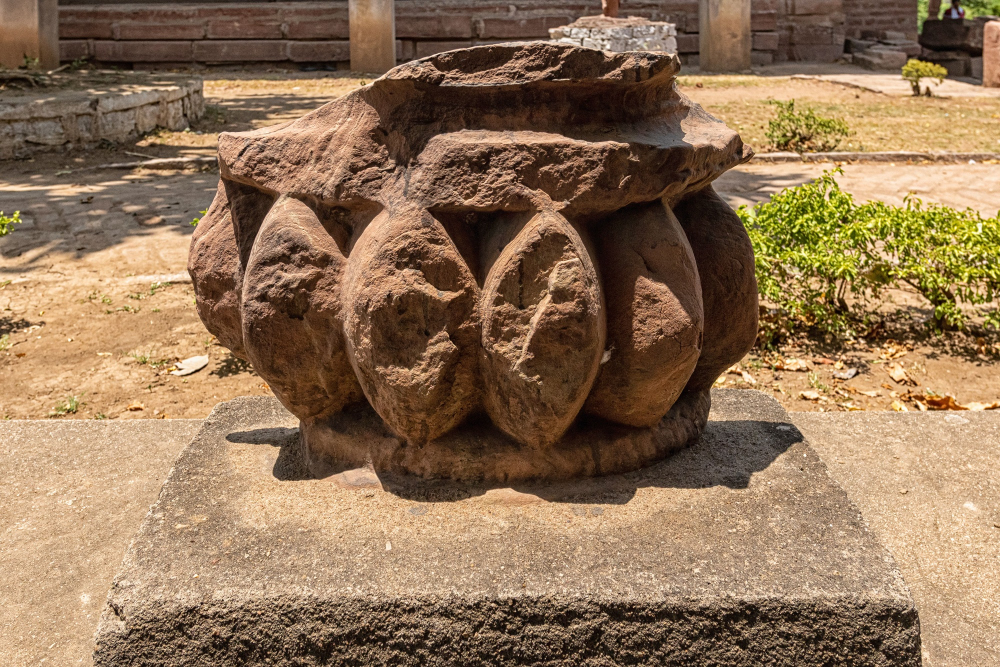
crowning member of the śikhara, āmlaka. Photo Credit: Anzaar Nabi
Devarani Temple
The Devarani temple is better preserved than the Jethani temple. Its layout and elevation is discernible, despite its damaged state. On plan, it consists of a mukhamaṇḍapa (entry porch), a maṇḍapa and a garbhagṛha.
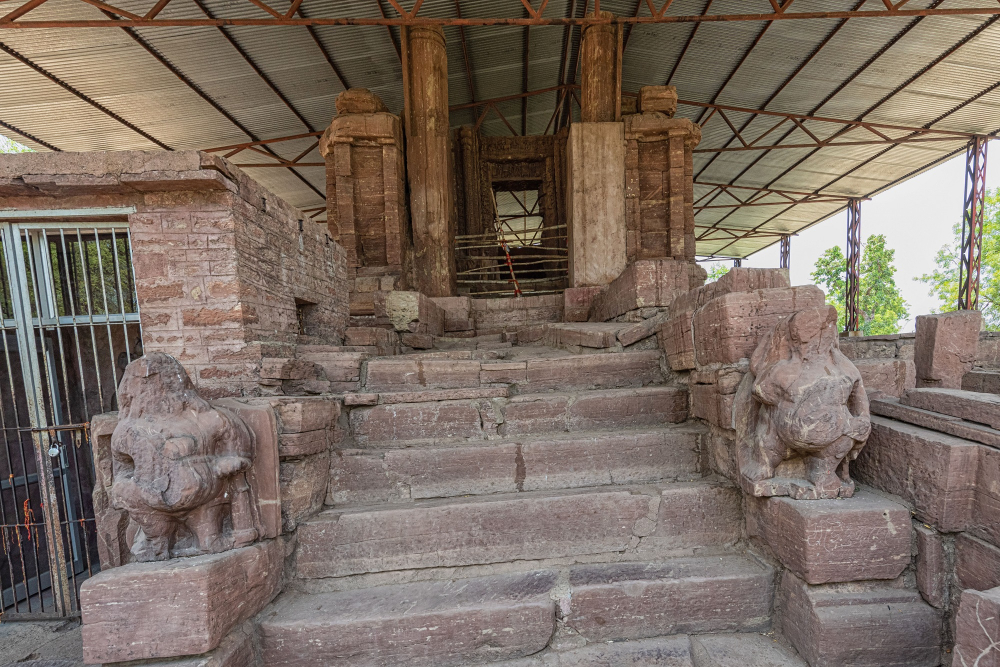
Tālā. Devarani temple, facade. Photo Credit: Anzaar Nabi
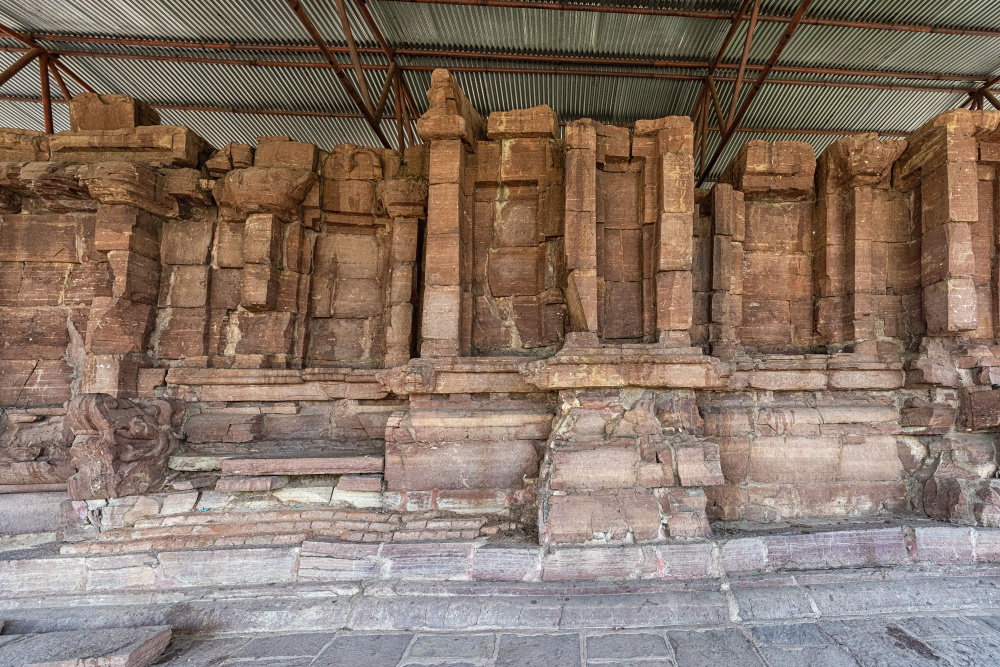
Tālā. Devarani temple, north view. Photo Credit: Anzaar Nabi
The temple is raised on a high platform which is approached through a flight of stairs guarded by two-dwarf figures who stand like dvārapālas. The facade of the temple is its best preserved element- the 6 śākha (jambs) doorway. The intricately carved doorway has 6 jambs- patravallī (leaf scroll), foliate scrolls, mālaśākhā (garland band made out of four different floral strands), patraśākhā (leaf band), a circular stambha śākhā (pilaster) with grāsamukha on the top and purnaghaṭa at the bottom and, a patravallī (from inside to outside). The lintel holds gajalakṣmi. The inner face of the jamb is embellished with kīrttimukhas, kubera, river goddesses, scenes with Umā-Maheśa.
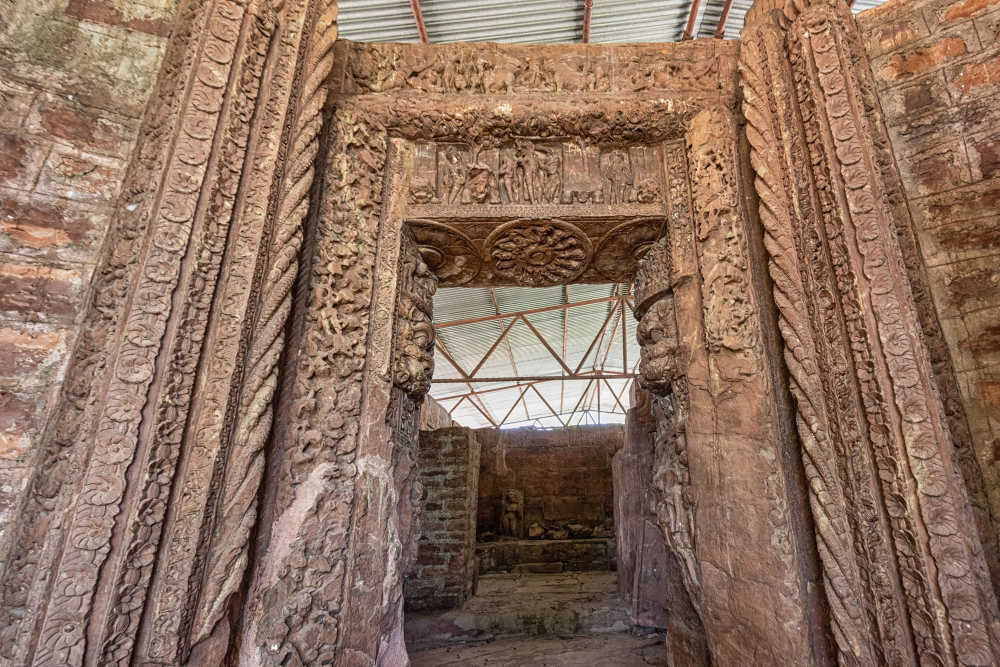
Devarani temple, doorjamb (dvāraśākhā). Photo Credit: Anzaar Nabi
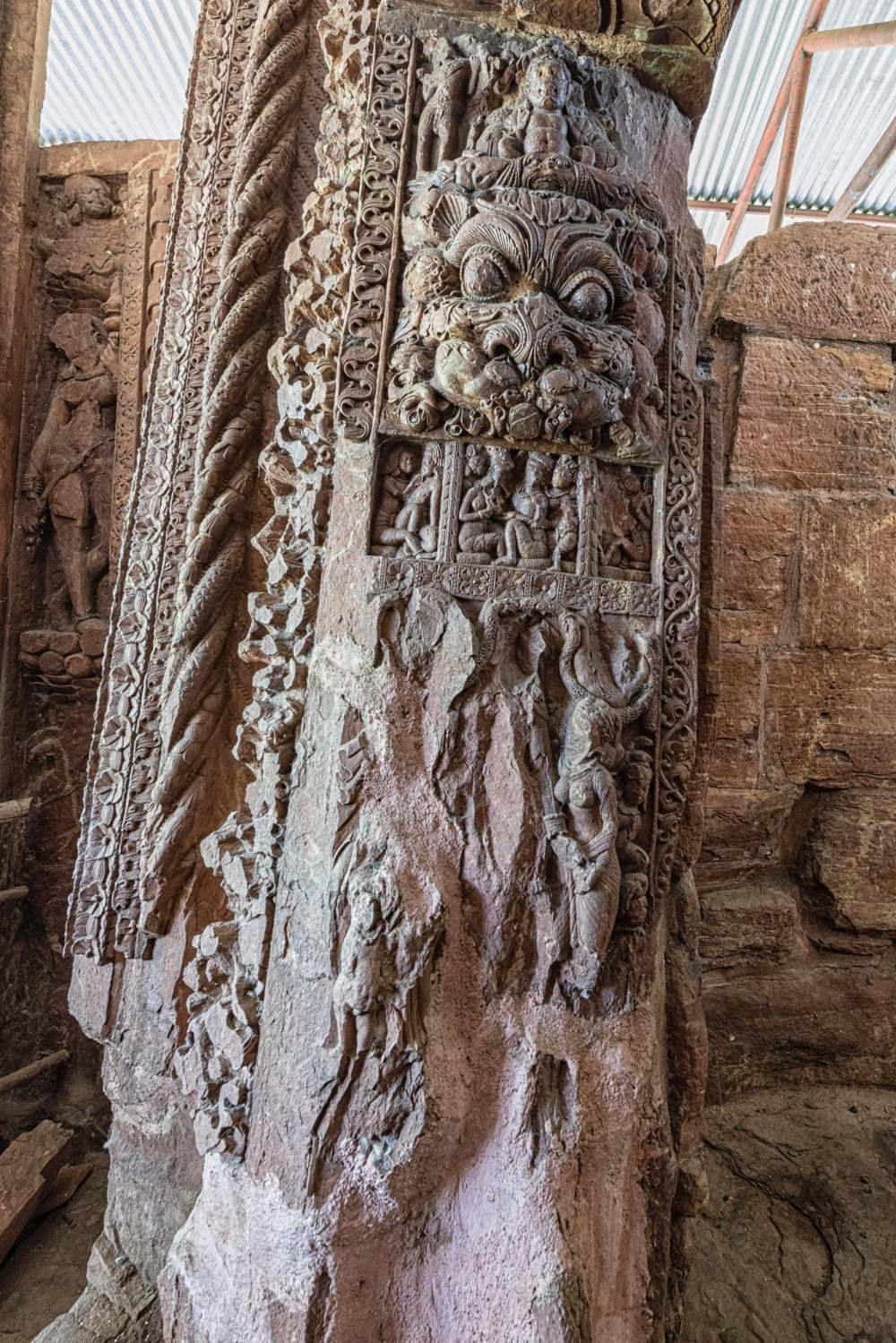
Devarani temple, doorjamb, details of the inner face. Photo Credit: Anzaar Nabi
The soffit of the inner face has three lotus medallions. The central medallion exhibits interesting details of fifteen seated figures with their right hands holding the heads of the preceding figures. The lateral walls of the mukhamaṇḍapa depict lamp and fly-whisk holder on each side. The style and nuanced ornamentation of the doorjamb indicates a move from the standard 'T-shaped' doorjambs of the Gupta period. It intricate carving on the surface certainly suggests the complexities of later period, which could have been the result of interaction between neighbouring regions.
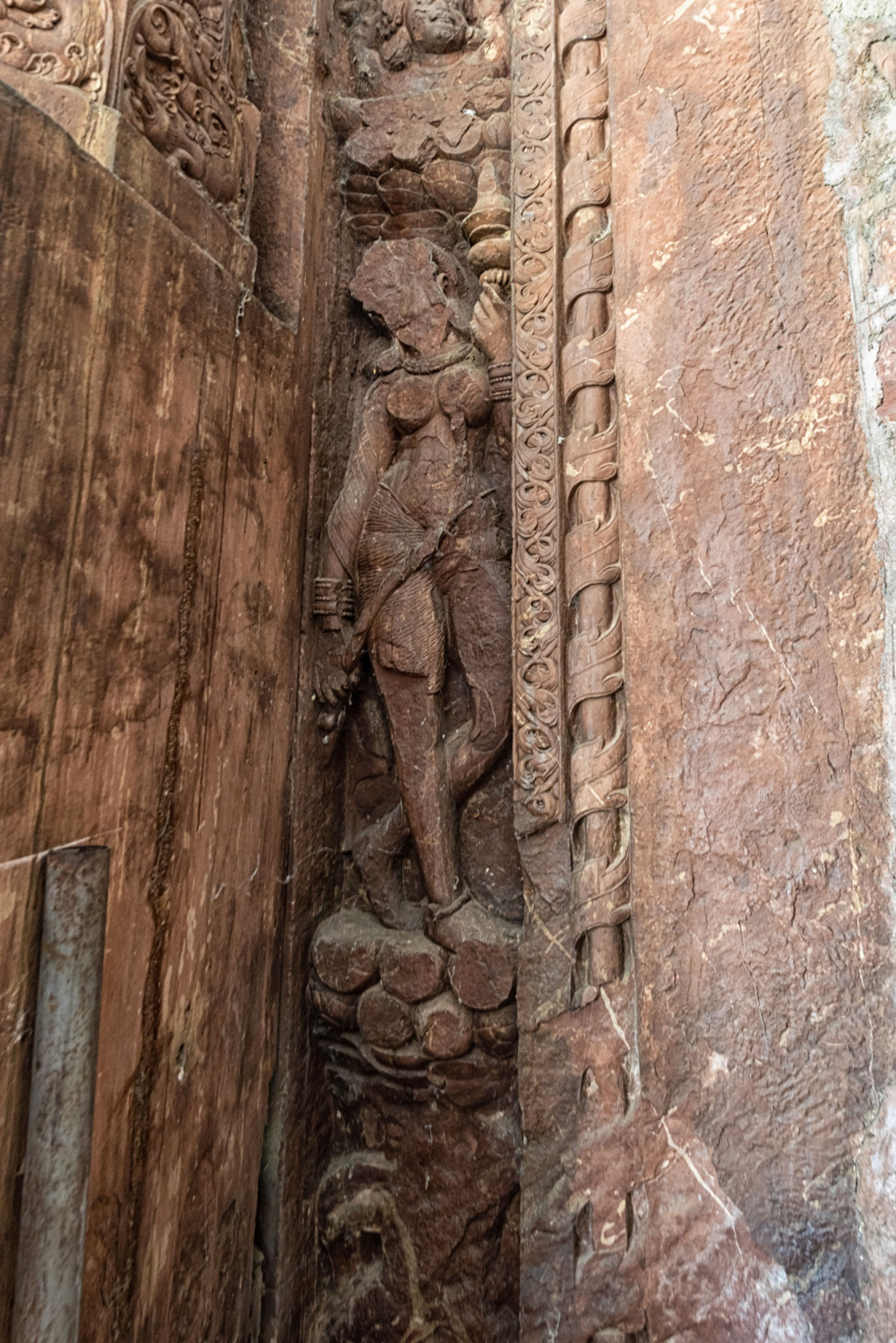
Lateral wall of mukhamaṇḍapa, adjacent to the doorjamb, lamp bearer. Photo Credit: Anzaar Nabi

Details of the soffit of the inner face of the doorjamb. Photo Credit: Anzaar Nabi
The interior of the Devarani temple is a repository of sculptures from the site, mostly dilapidated and moved from their original position. These are aligned in the maṇḍapa and garbhagṛha of the temple, which are unusually of the same size. While most of the sculptures are in poor state of preservation, the ones identifiable include, Kartikeya, dancing gaṇas, a slab with 7 miniature figure, a broken semi-divine[?] female figure.
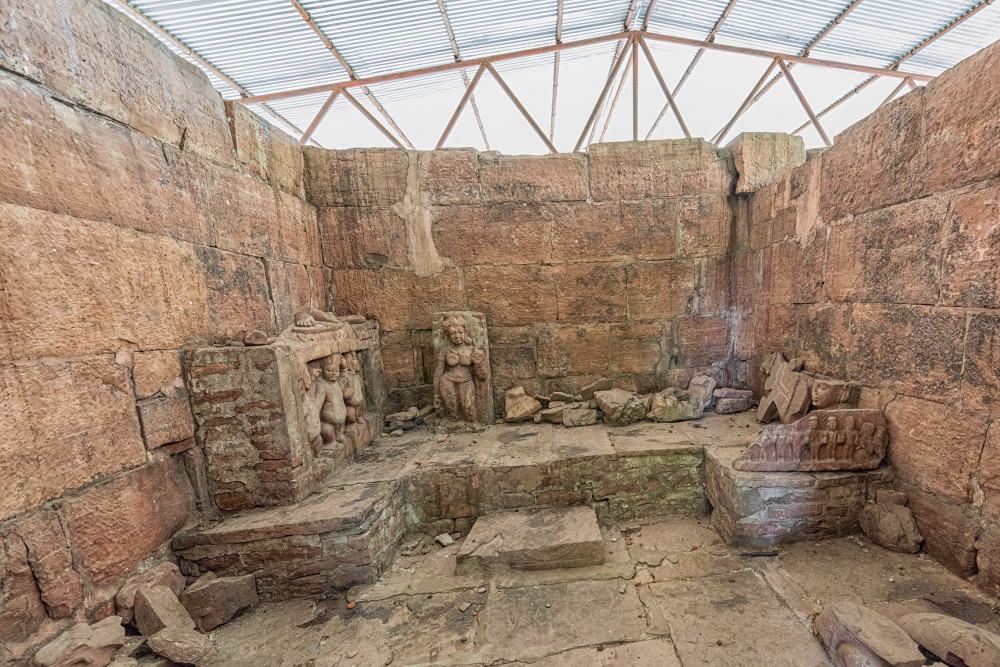
Dislodged sculptures inside the maṇḍapa or, garbhagṛha [?]. Photo Credit: Anzaar Nabi
![Dancing dwarfs and semi-divine female figure [?]](http://www.sahapedia.org/sites/default/files/styles/sp_inline_images/public/inline-images/20_2.jpg?itok=SUNRRmHv)
dancing gaṇas and, semi-divine female figure [?]. Photo Credit: Anzaar Nabi
The sculptures on the outside include, dislodged Gaṇeśa, a well-preserved Naigameṣa and, the best preserved of them all- the famous Tālā sculpture in a cell beside the temple.
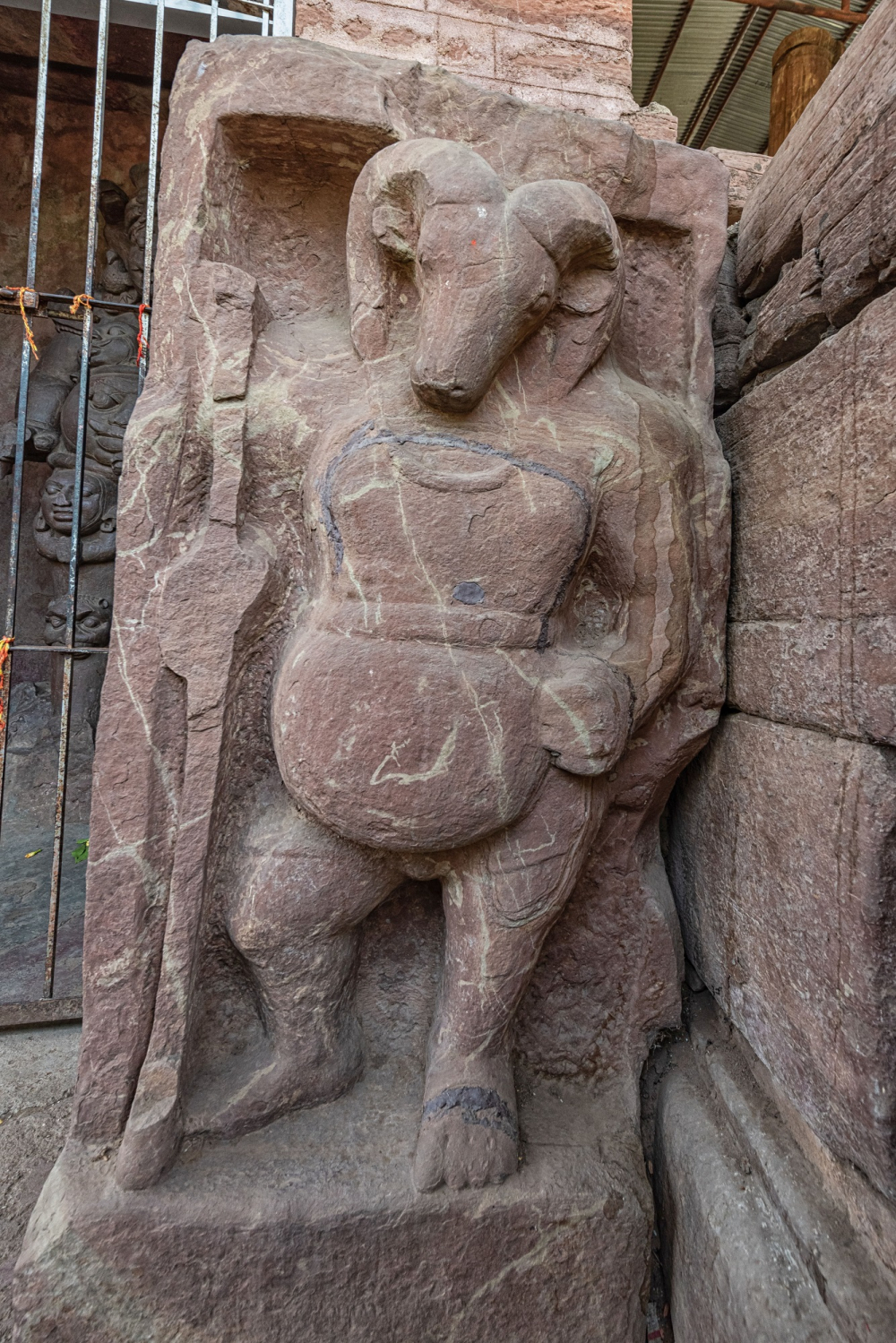
Naigamesh. Photo Credit: Anzaar Nabi
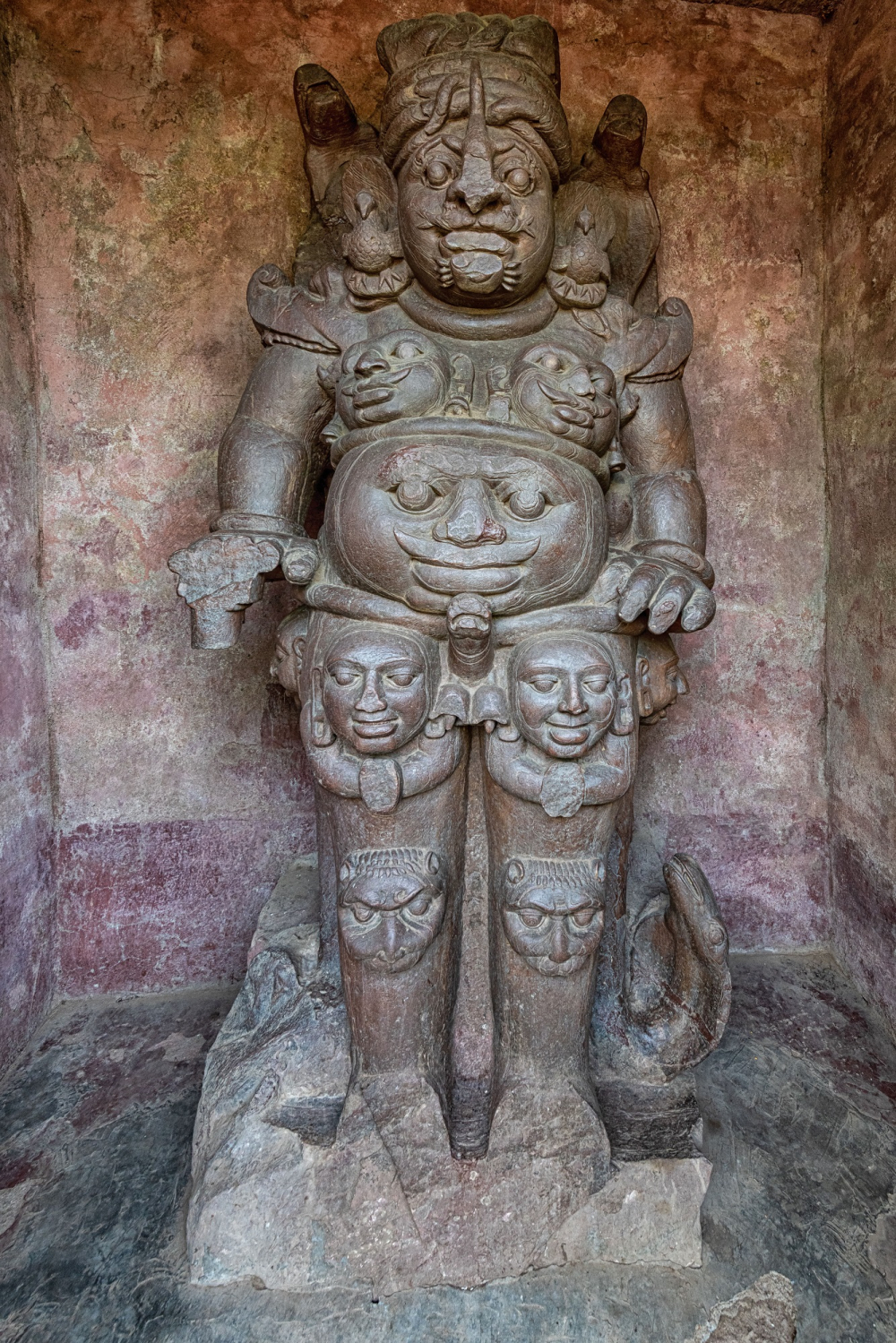
The popular Tālā sculpture. Photo Credit: Anzaar Nabi
The treatment of the walls (jaṅgha) resemble the temples in Deccan- especially, the ones built within the Calukyan territory, however, in indicating the semblance between the two forms the early date of the Devarani temple is not untended. The walls are segmented, right from the base forming bhadra (central niche) and subhadra (central niche of the bhadra) niches flanked by pilasters on both sides. The niches of the temple are empty.
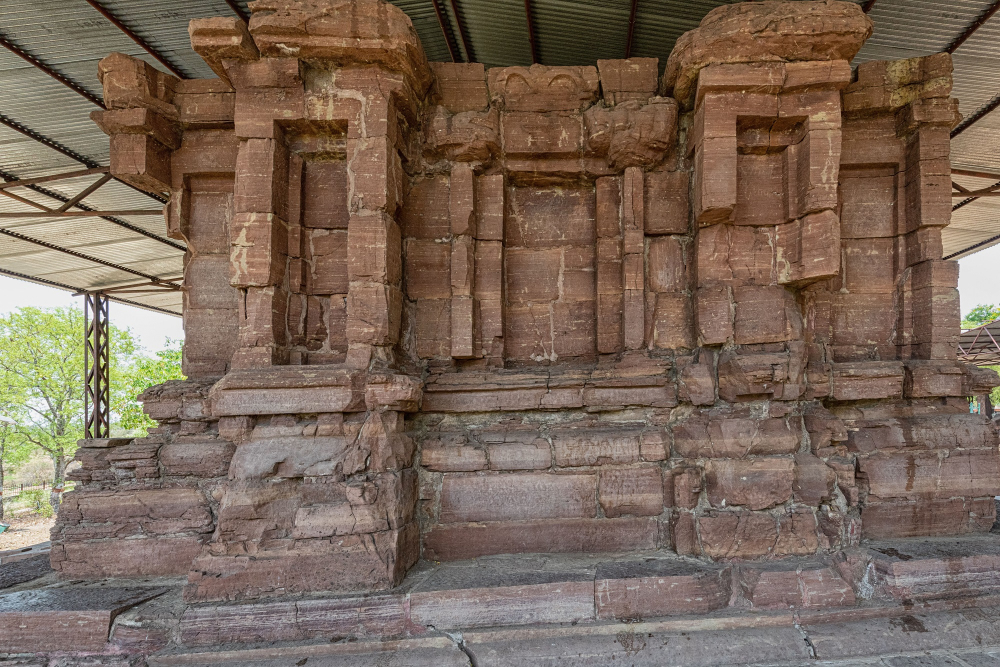
West View of the Devarani temple. Photo Credit: Anzaar Nabi
The absence of remains from the śikhara on the site and, the museum makes it difficult to comment on the style of the superstructure it had. It is possible that the temple was flat-roofed like the Nachna Pārvatī temple, Sanci temple 17 built in the Gupta period.
Owing to the dearth of sculptures directly and, certainly affiliated with the Devarani temple it is best to not affiliate the temple to a particular religious sect and, especially the main stream Hindu systems. Rather, the famous Tālā sculpture, dancing gaṇas and other gaṇa inspired iconographies suggest a strong influence of Gaṇa (or Yakśa) cult in the making of the Tālā and its sculptures.
Site Museum
The site museum standing opposite to the temples hold a variety of sculptures. Frequently witnessed are the load-bearers (bhāravāhaka). The most extraordinary sculptures from the museum are that of two ascetics [?]- one seated, other standing. The head-dress, posture and countenance of the two sculptures look natural. Other sculptures are dislodged or partly damaged.
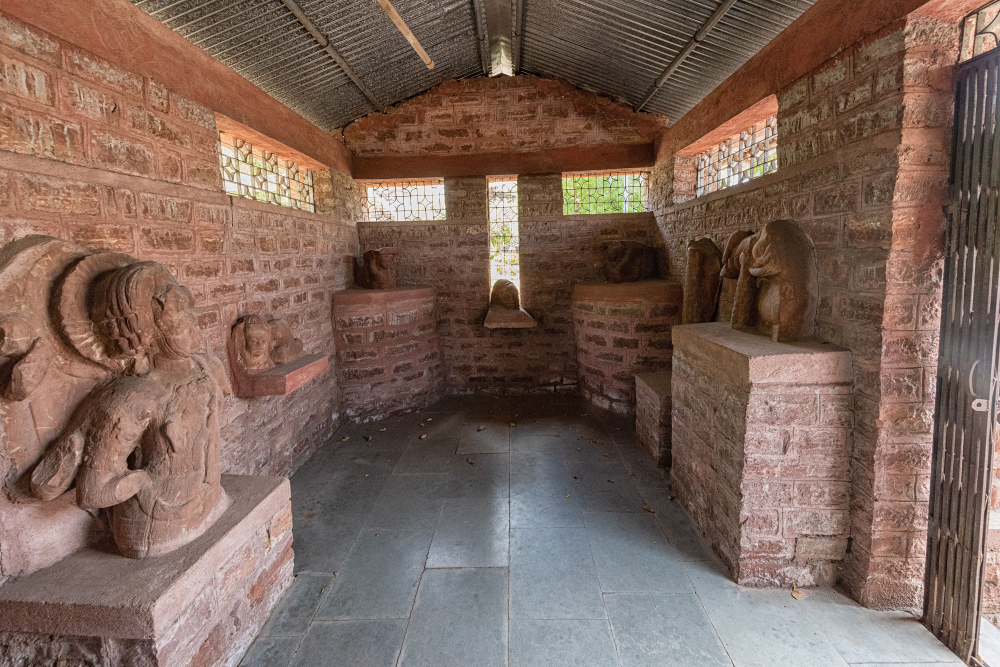
Site museum from inside. Photo Credit: Anzaar Nabi
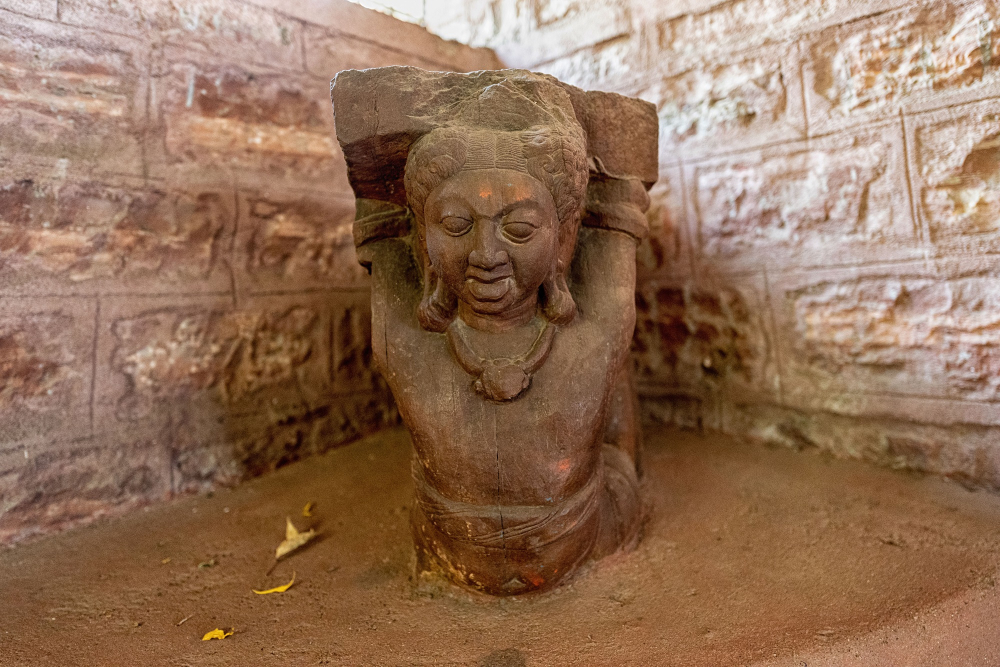
Load-bearer (bhāravāhaka). Photo Credit: Anzaar Nabi
![Ascetic [?]](http://www.sahapedia.org/sites/default/files/styles/sp_inline_images/public/inline-images/27_1.jpg?itok=poaI_hFp)
Ascetic [?]. Photo Credit: Anzaar Nabi
Bibliography
Beglar, J. D. 1878. Tour in Bundelkhand and Malwa; 1871-72 and in the Central Provinces, 1873-74, Vol. VII. Calcutta: Archaeological Survey of India (ASI).
Nigam, L. S. ed., 2000. Riddle of Indian Iconograhy: Zetetic on Rare Icon from Tālā. Delhi: Sharada Publishing House.
Saxena, Saurabh. 2011. "Tala- the Riddle of an Icon". https://puratattva.in/2011/09/11/tala-the-riddle-of-an-icon-1080.
Stadtner, Donald M. 1980. "A Sixth Century A.D. Temple from Kosala". Archives of Asian Art, Vol. 33, pp. 38-48.
This content has been created as part of a project commissioned by the Directorate of Culture and Archaeology, Government of Chhattisgarh, to document the cultural and natural heritage of the state of Chhattisgarh.
